
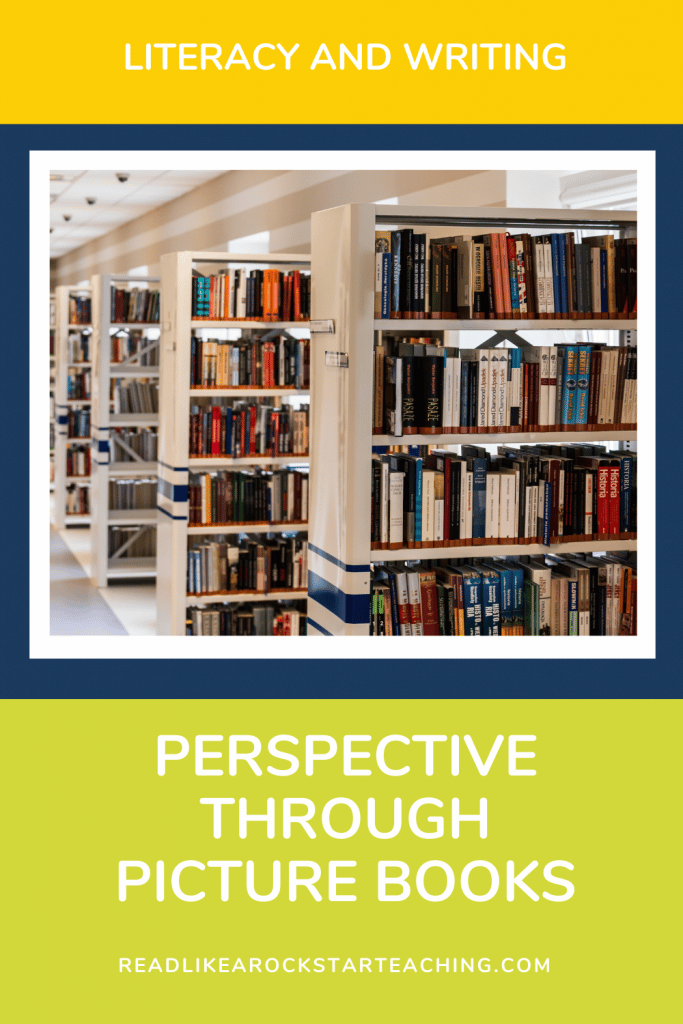
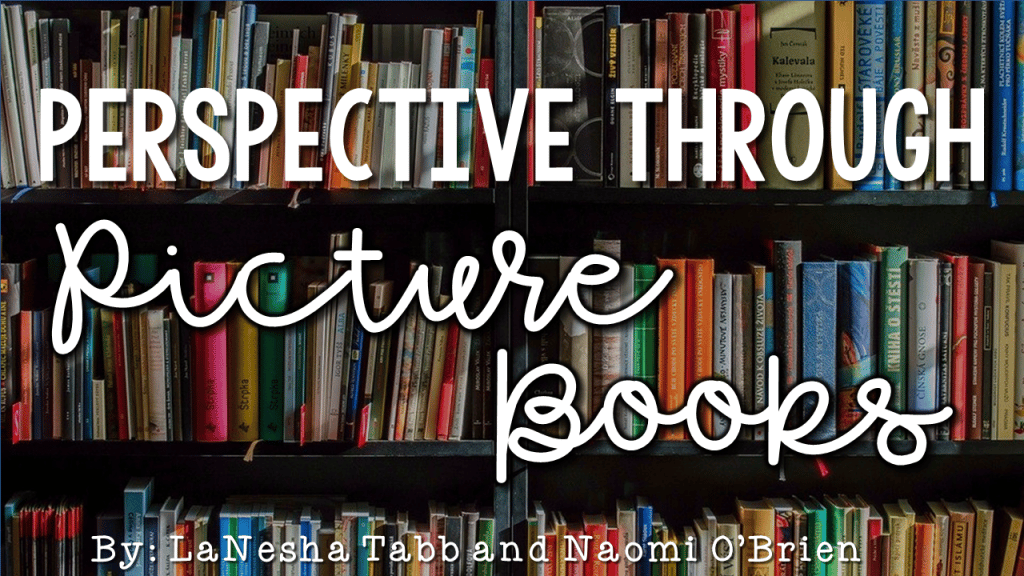
Perspective Through Picture Books Lessons
My teaching partner in crime, LaNesha and I, are obsessed with pushing our kids to become the best readers and people they can be. One way we think that can be achieved is through the texts we put in front of them all year long.

Diversity in children’s books is seriously lacking and we have made it our mission to make a better effort about making sure the texts we place in front of our students show diversity, deepen the love of literature, and widen their perspectives.
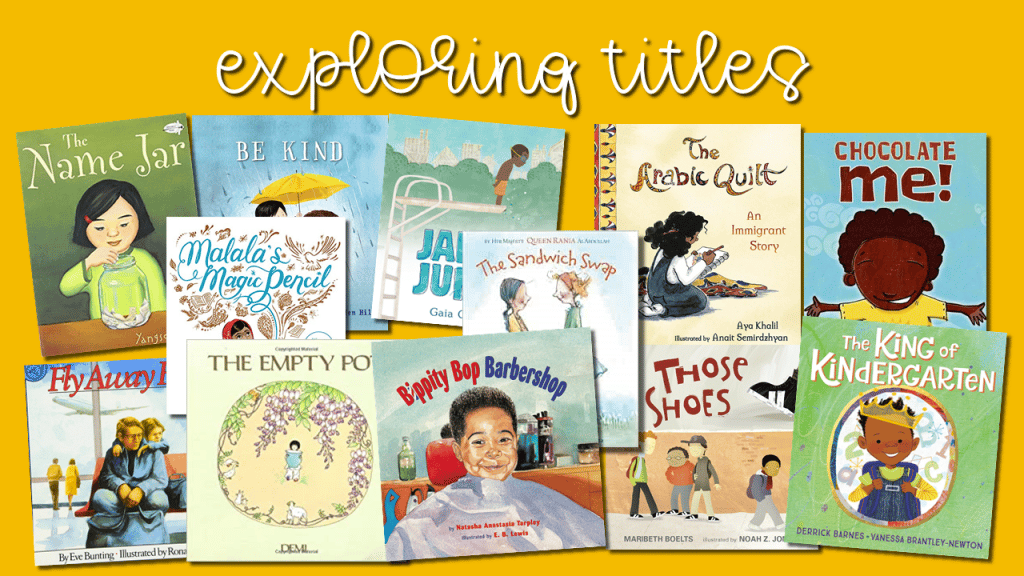
We went through the books we typically use for read aloud time and realized we could be doing better. There were waaaaay too many animals and not enough culture, diversity, and inclusiveness. We decided to make ourselves a little checklist so that we could always pick a text we were proud of. We also made the shift of picking a text that was 1 to 2 years above our kindergarten and first grade students grade level. We started using books for an entire week AND covering all the standards with one book. In the past, we chose several different books to help teach one or two standards. But now we are using one book to teach them ALL! (WHAT?!?)
We pull out a powerful perspective or understanding they can gain from the text and keep that in mind while we plan for the week. Everything we plan will help them gain this perspective. We always have a culminating task at the end of the week to gauge their understanding, and every step we take along they way prepares them to be wildly successful with that task.
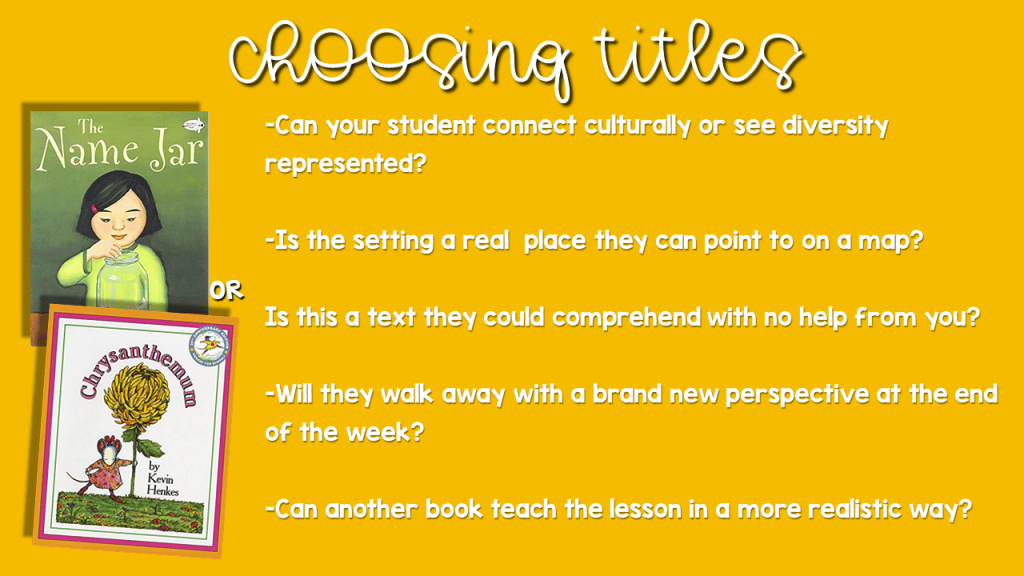
So, after we decide on a title, we think about the background knowledge needed for students to be able to access this text. We are not ashamed to tell you that we may take one or two days to build background knowledge before we ever open the text. I don’t know if that was shocking to you, but it was a HUGE shift for us. A shift that made a world of difference! If your students can read all of the words in a text, but have no idea what the content is about, they aren’t reading! They have to be able to comprehend what they are reading. Background knowledge is one of the keys to comprehension. And because we are going to teach from the same book for a couple of days, making this much time to build background knowledge made more sense and felt more meaningful.
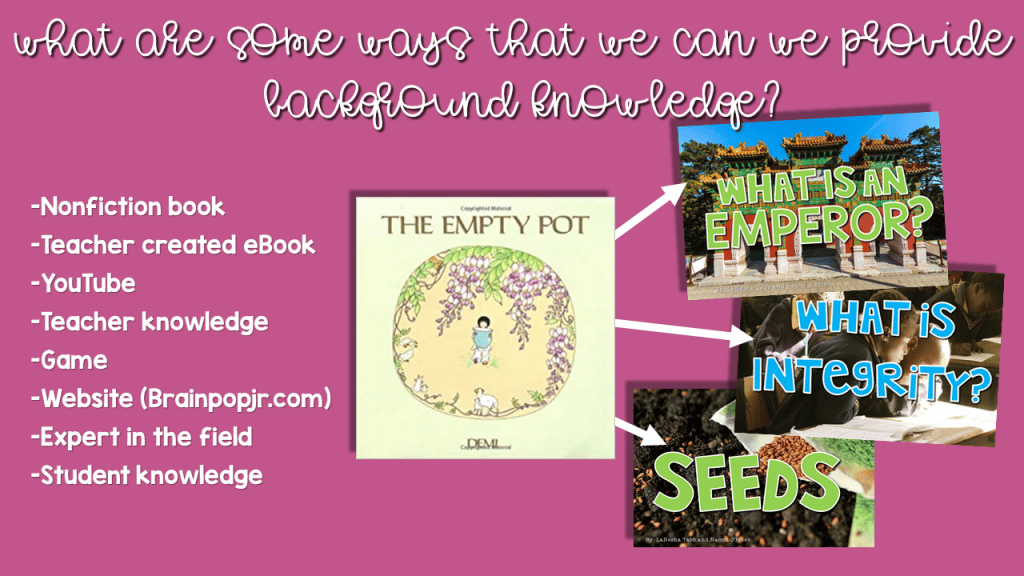
In addition to building background knowledge, we make sure we pick three words from the text that are relevant to comprehending the story.
We teach them the words, and add in two synonyms and practice them all week long. We use an idea called synonym triplets from the amazing, Augusta Mann.
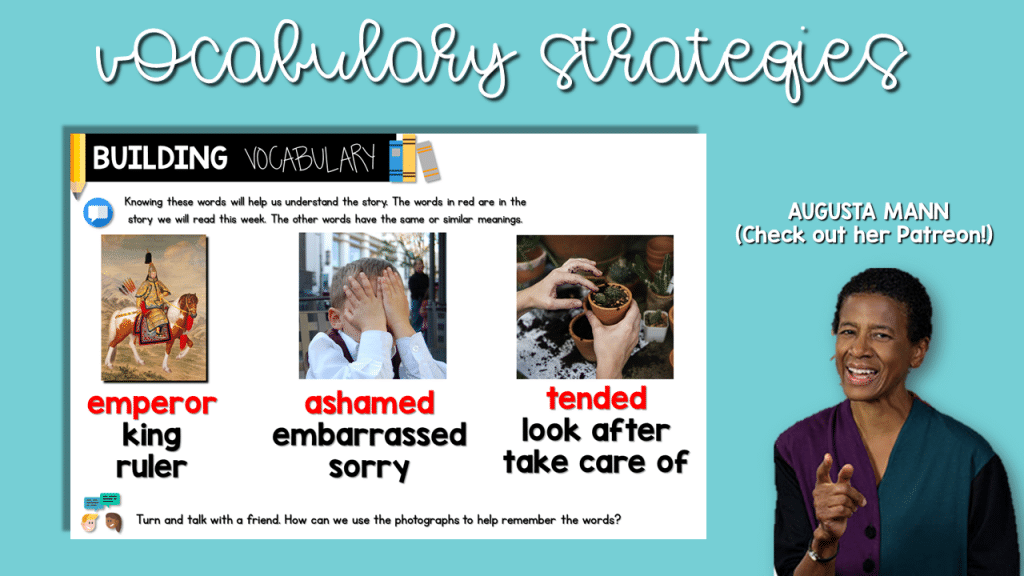
The next parts of our lessons all work together to create an incredible reading lesson. We plan out each day. We decide which 2-3 standards we will focus on each day and then create comprehension questions and anchor charts to capture student thinking for all of those days. We start with the basic standards and skills like story elements and retelling. We make anchor charts, answer questions, and set our daily purpose for reading around those standards early in the week. This helps set the foundation for trickier standards that we work on later.
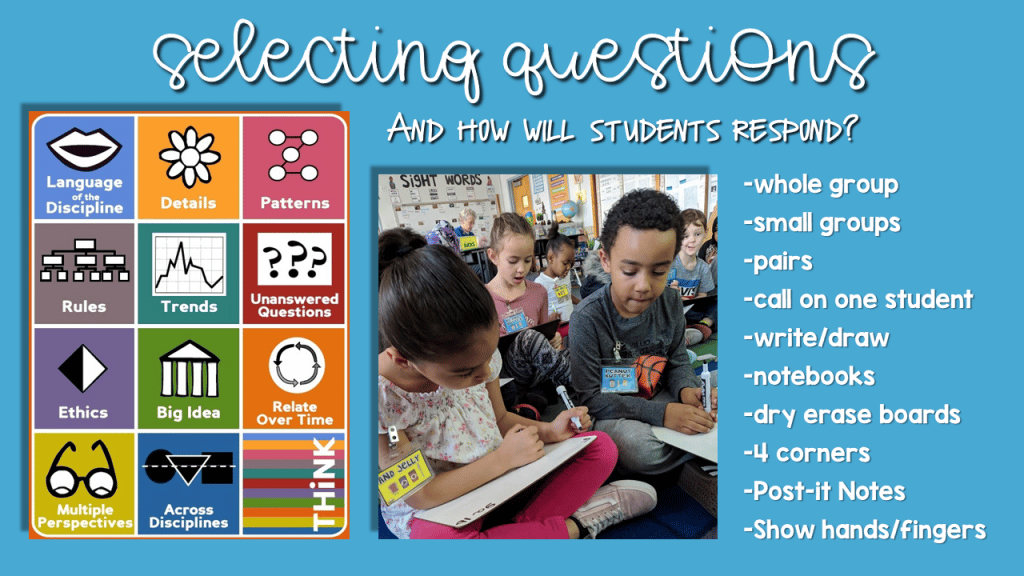
We make sure we are asking higher order thinking questions to get our students really thinking! We also allow our students to respond in a variety of ways.
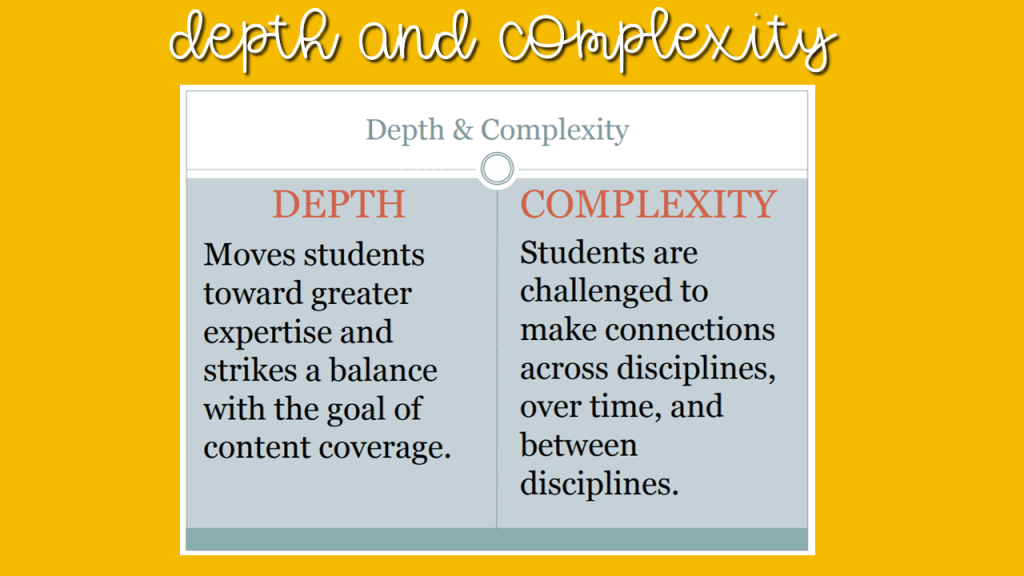
If you aren’t familiar with the depth and complexity icons, you should definitely look into them! They are amazing tools that can help you transform the way you ask your students questions. Many question stems are available to help you get started!

Let’s pretend it’s day two of a lesson. We spent day one building background knowledge and learning vocabulary. Now we will start this day by telling our students we are going to focus on the characters, setting, problem and solution. We give certain groups of students specific parts to focus on. In my class, my students wear badges. One year they were either ‘peanut butter’ or ‘jelly’. I would say, “Peanut butter, you all are paying attention to the characters and the problem. Jelly friends, you are focusing on the setting the solution.” All of my students always have dry erase boards during this time, and while I read, they draw/write to take notes. I use their notes and their input to create anchor charts.
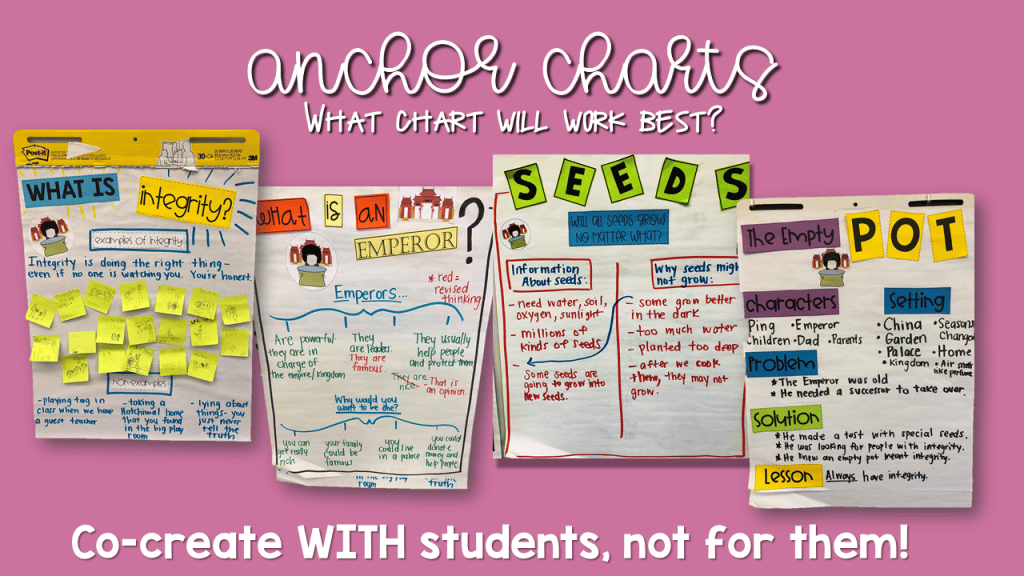
Since I know in advance what standard I’m focusing on, and I chose an anchor chart to support it, the comprehension questions I ask will assess their understanding of those standards. The questions must be standard based and require higher order thinking. We can’t expect students to answer a rigorous question at the end of the week, if we don’t prepare them for it during the week! The anchor chart they helped create is visible at all times during the lesson (that day and all week), and my students are allowed to use it to support their answers.
Now, I am Thinking Maps trained, so that’s what I use, but any anchor chart will do! Use whatever works for you and your students. If you’re comparing and contrasting characters/events you can use a double bubble map, but a Venn diagram is effective, too! Or any chart the visually organizes information for your kids in a way that makes sense to them. Make sure your charts have a guiding question (related to the reading focus for the day) so that when students refer back to it, they know what information they are looking at and what thinking was involved. If you look into Thinking Maps, they all have key words associated with them that can be used in your guiding questions.
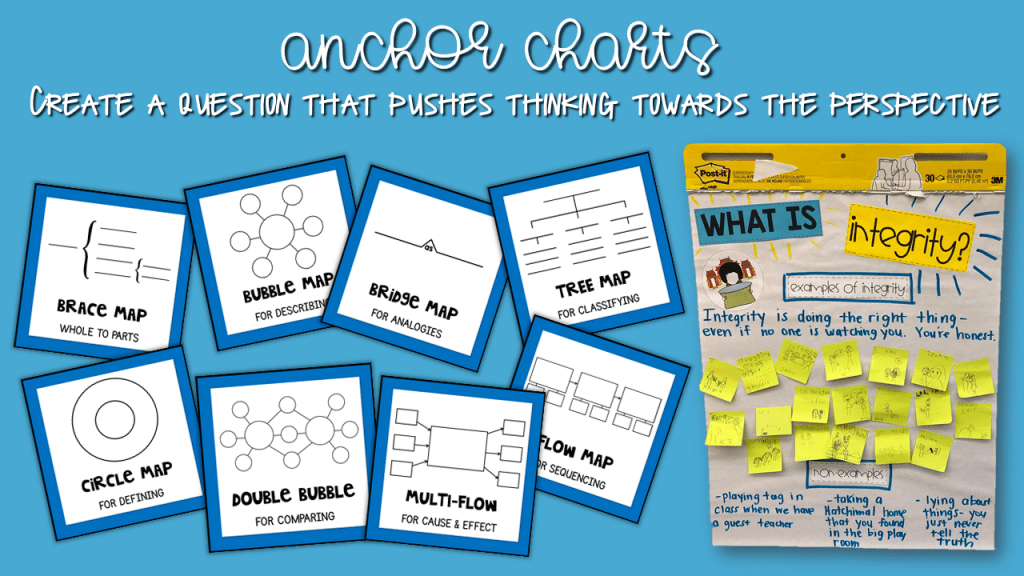
Last, but certainly not least, we have our meaningful task. It’s a task that relates to the book and will allow students to apply what they learned in a meaningful way. It’s a way for LaNesha and I to see if the perspective we chose and taught was gained. It’s going to be more than a craft or a coloring sheet. It might be a debate about the decisions the characters made or an event in the story. It might be a writing prompt that requires students to use higher order thinking skills to answer. You’ll find a few more ideas below! I, myself, love a good debate!
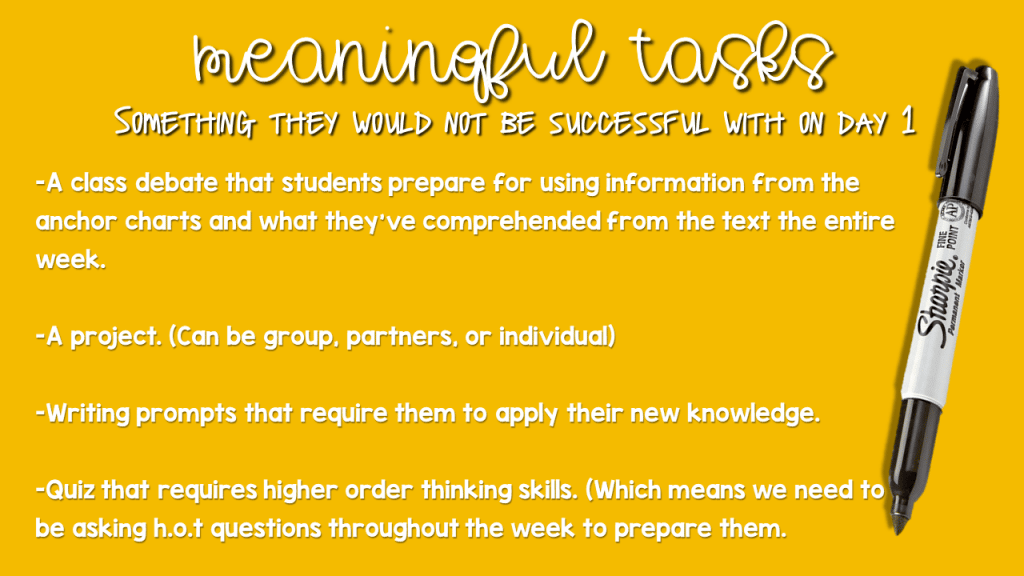
After reading the book, The Empty Pot, with my students, we had a debate about the actions of one the characters. My students filled out a pre-debate sheet. They had to give reasons about whether or not the agreed or disagreed with a statement I gave about one of the character’s integrity. They had to use text based evidence to defend their side. I didn’t have to ask about character, setting, problem and solution, because all of that knowledge came out during the debate. They used their background knowledge, their new vocabulary and the learning captured each day on anchor charts and during text discussions to support their positions. I didn’t have to ask them to simply retell the story, they were using parts of the story in their arguments! Saying things like, “Well, remember in the beginning….” or, “But, at the end of the story…”. It was amazing to see and hear. Little kids can do BIG things. LaNesha and I firmly believe that.
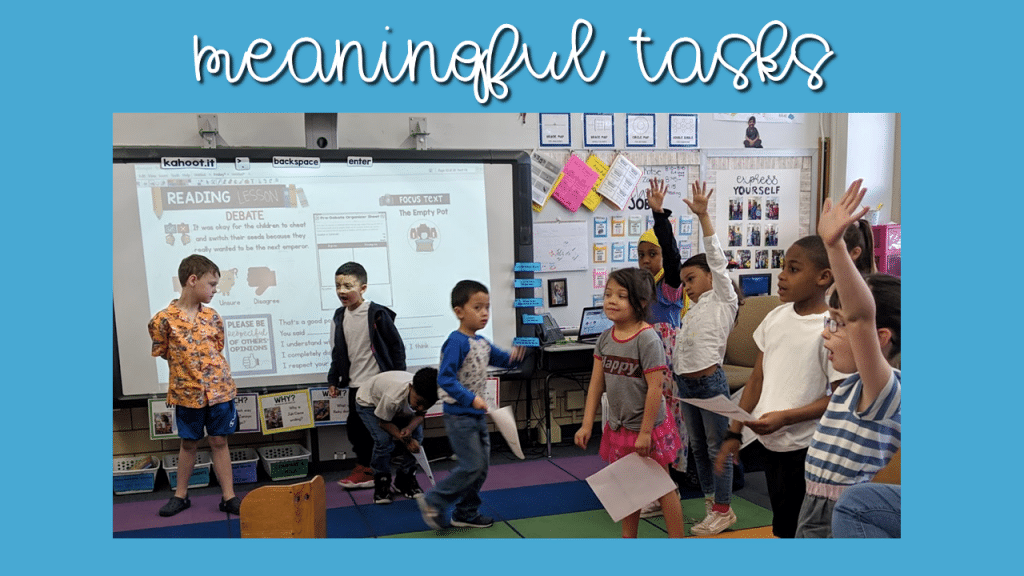
We have some planned out Perspective Through Picture Books lessons already completed for you to check out! All you need is the book!
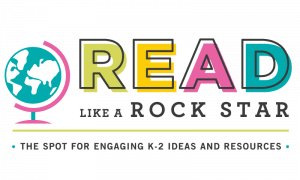

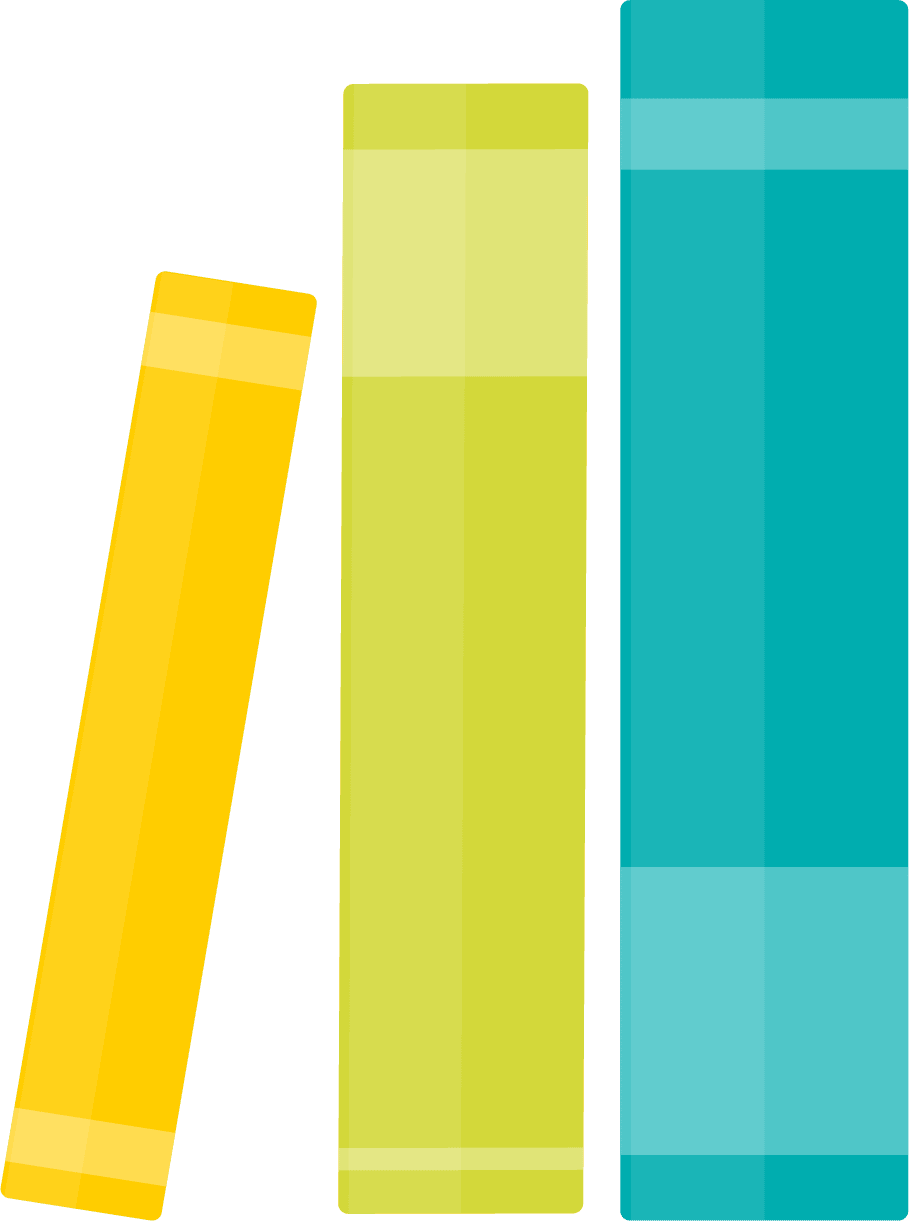
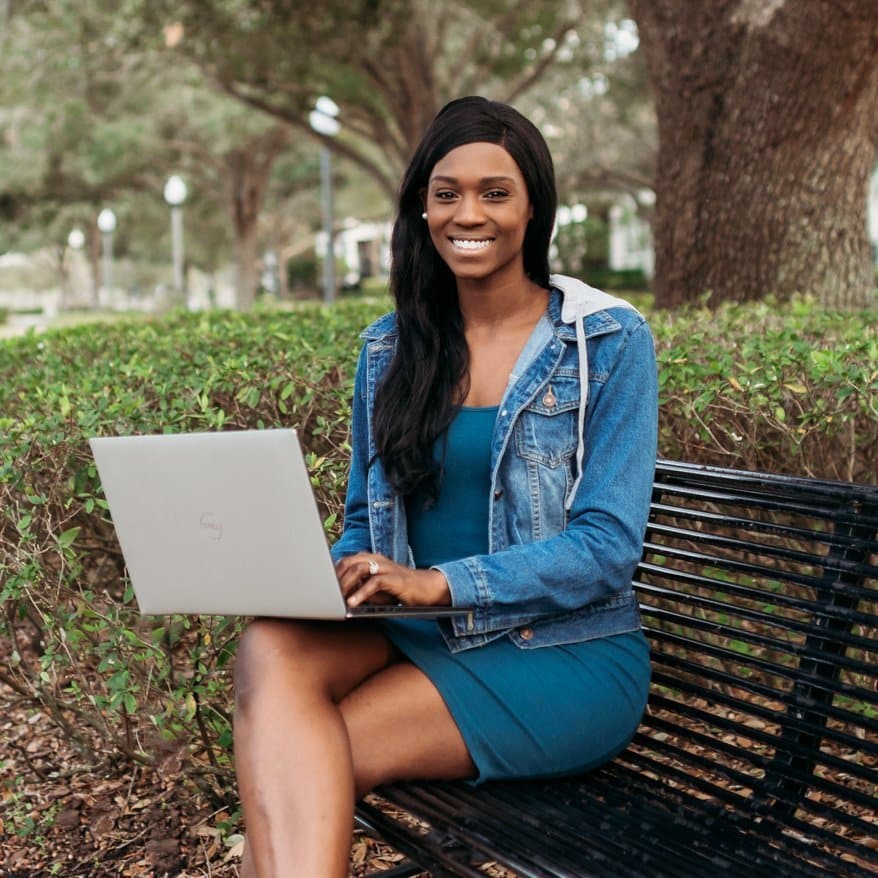
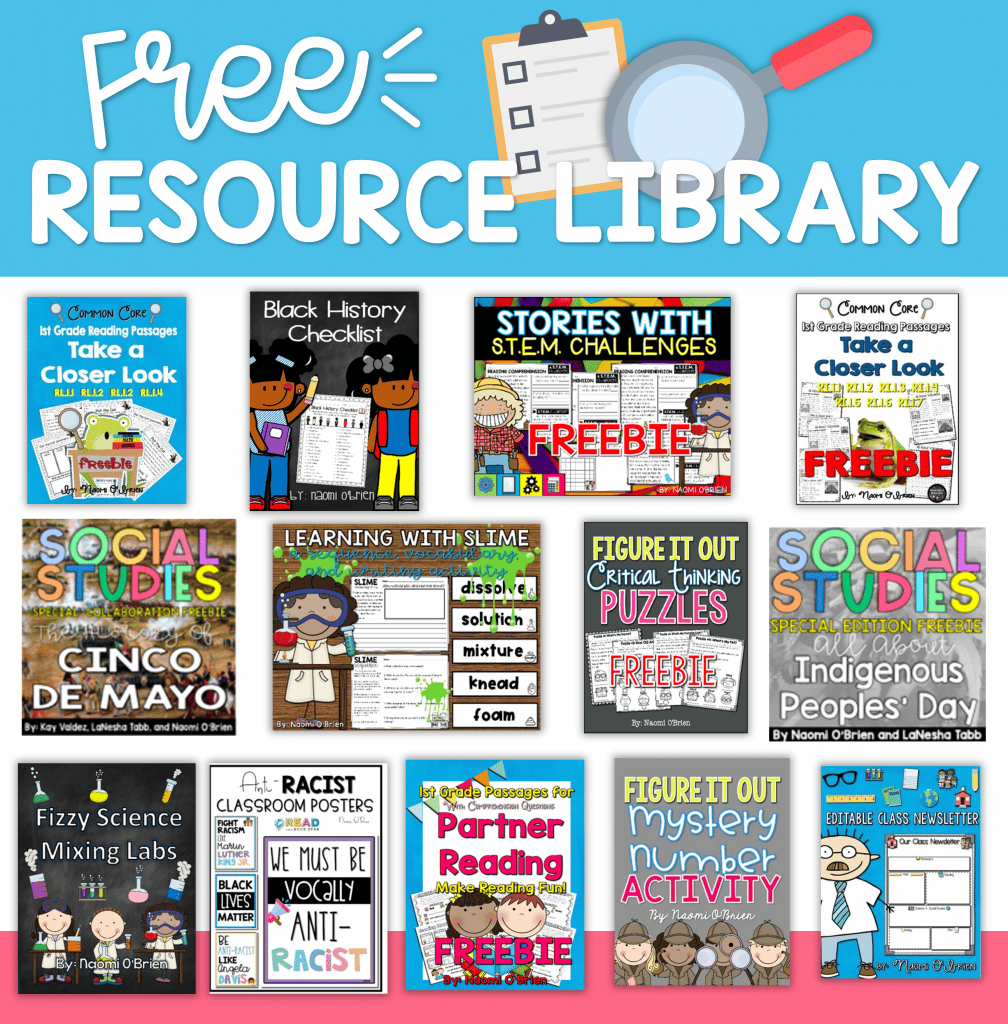
| Cookie | Duration | Description |
|---|---|---|
| cookielawinfo-checkbox-analytics | 11 months | This cookie is set by GDPR Cookie Consent plugin. The cookie is used to store the user consent for the cookies in the category "Analytics". |
| cookielawinfo-checkbox-functional | 11 months | The cookie is set by GDPR cookie consent to record the user consent for the cookies in the category "Functional". |
| cookielawinfo-checkbox-necessary | 11 months | This cookie is set by GDPR Cookie Consent plugin. The cookies is used to store the user consent for the cookies in the category "Necessary". |
| cookielawinfo-checkbox-others | 11 months | This cookie is set by GDPR Cookie Consent plugin. The cookie is used to store the user consent for the cookies in the category "Other. |
| cookielawinfo-checkbox-performance | 11 months | This cookie is set by GDPR Cookie Consent plugin. The cookie is used to store the user consent for the cookies in the category "Performance". |
| viewed_cookie_policy | 11 months | The cookie is set by the GDPR Cookie Consent plugin and is used to store whether or not user has consented to the use of cookies. It does not store any personal data. |
Thank you for your interest in booking a private professional development experience! Please fill out our Booking Inquiry form and a member of our team will contact you soon.